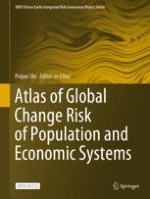
Open Access 2022 | OriginalPaper | Buchkapitel
Mapping Global Population Exposure to Heatwaves
verfasst von : Qinmei Han, Wei Xu, Peijun Shi
Erschienen in: Atlas of Global Change Risk of Population and Economic Systems
Verlag: Springer Nature Singapore
Aktivieren Sie unsere intelligente Suche, um passende Fachinhalte oder Patente zu finden.
Wählen Sie Textabschnitte aus um mit Künstlicher Intelligenz passenden Patente zu finden. powered by
Markieren Sie Textabschnitte, um KI-gestützt weitere passende Inhalte zu finden. powered by